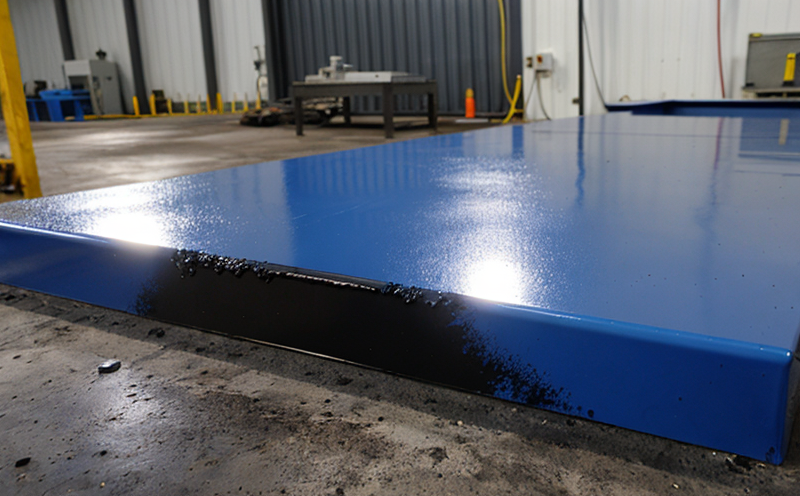ISO 10683 Non-Electrolytically Applied Zinc Flake Coatings Testing
The ISO 10683 standard provides a comprehensive method for the testing and evaluation of non-electrolytically applied zinc flake coatings. This test is crucial in ensuring that these types of coatings meet specific performance criteria, particularly those required by industrial standards like ISO and ASTM.
In metallurgy and material science, surface coatings play an essential role in protecting materials against corrosion and other environmental factors. Non-electrolytically applied zinc flake coatings are known for their excellent resistance to rust and oxidation due to the presence of zinc particles that form a barrier between the substrate and its surroundings.
The testing procedure outlined in ISO 10683 involves several steps aimed at assessing various properties of these coatings. These include but are not limited to adhesion strength, thickness uniformity, porosity levels, impact resistance, and flexibility. By adhering strictly to this standard, manufacturers can ensure that their products meet stringent quality benchmarks.
The process begins with careful preparation of the specimen according to ISO 10683 guidelines. This typically involves cleaning the surface thoroughly followed by drying before applying the zinc flake coating via non-electrolytic means such as spraying or dipping. Once applied, additional curing steps may be necessary depending on the type of coating used.
After allowing sufficient time for the coating to cure, testing can commence. For example, adhesion tests might involve using a device that measures how well the coating sticks to the underlying metal substrate under defined conditions. Thickness measurements are taken with specialized equipment capable of detecting even slight variations across large areas or small localized regions.
Porosity levels are determined through visual inspections combined with specific tools designed for identifying voids within the coating structure. Impact resistance is evaluated using impact testers that simulate real-world impacts experienced during use, while flexibility tests assess whether the coating remains intact when bent into specified shapes without breaking.
The results from these various evaluations provide valuable insights into both the quality of individual products and overall consistency across batches produced by different facilities or suppliers. Compliance with ISO 10683 helps build trust among customers who rely on reliable protection provided by zinc flake coatings in critical applications ranging from automotive components to industrial machinery parts.
Understanding these nuances allows us to appreciate why thorough testing is so important, especially given the potential consequences of substandard materials failing prematurely and exposing expensive equipment or infrastructure to damage. Rigorous adherence to industry standards ensures that only high-quality products reach end-users, thereby enhancing reliability and safety across diverse industries.
Why It Matters
The importance of ISO 10683 lies in its ability to standardize the evaluation process for non-electrolytically applied zinc flake coatings. This standardization promotes consistency, quality assurance, and interoperability among manufacturers worldwide.
- Consistency: Ensures that all tests conducted follow identical protocols, leading to more reliable comparisons between results from different labs or facilities.
- Quality Assurance: By meeting the stringent requirements set forth by ISO 10683, companies can demonstrate their commitment to producing superior products.
- Interoperability: When all stakeholders involved adhere to this standard, it facilitates smoother collaboration and communication between suppliers, buyers, and users of these coatings.
These factors contribute significantly towards maintaining industry reputation and fostering trust among key players in the supply chain. Ultimately, compliance with ISO 10683 helps maintain high standards within the metallurgy & material testing sector, ensuring that customers receive products they can rely upon for their intended purposes.
Benefits
- Enhanced Product Reliability: With consistent testing methods as per ISO 10683, manufacturers ensure that their zinc flake coatings consistently meet or exceed specified performance criteria.
- Increased Customer Confidence: By demonstrating adherence to international standards like ISO 10683, businesses build stronger relationships with clients who value quality and reliability in their products.
- Improved Competitive Advantage: Organizations that invest in rigorous testing procedures gain a competitive edge by offering superior coatings capable of providing longer-lasting protection against corrosion and other environmental factors.
- Promotes Industry Best Practices: Encouraging widespread adoption of ISO 10683 promotes best practices within the metallurgy & material testing sector, contributing to overall industry growth and development.
The above benefits underscore the significance of implementing robust quality control measures based on internationally recognized standards such as ISO 10683. By doing so, companies not only improve their own operations but also contribute positively towards maintaining high standards across the entire supply chain.
Why Choose This Test
- Comprehensive Evaluation: The ISO 10683 test offers a comprehensive approach to evaluating non-electrolytically applied zinc flake coatings, covering multiple critical aspects such as adhesion strength, thickness uniformity, porosity levels, impact resistance, and flexibility.
- International Recognition: Adhering to this standard ensures that your products meet the expectations of global markets, thereby opening up opportunities for international trade.
- Expertise & Experience: Our team of highly trained professionals brings extensive experience in metallurgy & material testing, ensuring accurate and reliable results every time.
- State-of-the-Art Facilities: Utilizing advanced laboratory equipment and state-of-the-art facilities allows us to conduct precise tests that deliver accurate data.
Choosing ISO 10683 non-electrolytically applied zinc flake coatings testing not only guarantees adherence to international best practices but also provides peace of mind knowing that your products are thoroughly evaluated against stringent criteria. This commitment to excellence sets you apart in a competitive market and helps establish long-term partnerships with satisfied customers.





